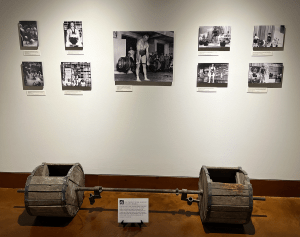The golden age of professional strength performers – both men and women – lasted from approximately 1890 to 1930. A few superstars of strength – Quebec’s Louis Cyr; France’s Louis “Apollon” Uni; America’s Warren Lincoln Travis; and Germany’s Arthur Saxon, Katie Sandwina, and Hermann Goerner – became wealthy to one degree or another by exhibiting their physical power in this era, while hundreds of other less well-known performers made a living. Nearly all of these men and women advertised themselves as “The Strongest in the World,” whether the title was deserved or not. To do otherwise would have cost them money at the ticket booth.
In the early 20th century, fans of strength began to organize competitions in which barbells and dumbbells were lifted instead of horses, barrels, or people. Weightlifting, in which the barbell is lifted overhead, was included in the first modern Olympic Games in 1896 and has been part of every summer Olympic Games since 1920.
In the 1960s, powerlifting – in which lifters perform the squat, bench press, and deadlift – emerged and quickly became more popular than weightlifting in the United States in terms of numbers of participants.
The newest “strength sport” is called “Strongman,” and it uses the trappings and even some of the stunts made famous by professional strongmen and strongwomen over a hundred years ago. Driven by the solid ratings of televised Strongman contests, the sport has enjoyed rapid growth over the past two decades.





